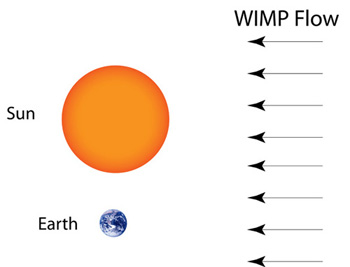Research
On this page you'll find a list of my publications, a short summary of my current research and a list of the conferences, schools and workshops I have attended.
A copy of my CV is available here.
Publications and Pre-prints
- Jonathan H. Davis, Fitting the annual modulation in DAMA with neutrons from muons and neutrinos, arXiv:1407.1052, Phys. Rev. Lett. 113, 081302 (Editors' Suggestion)
- Jonathan H. Davis, Christopher McCabe and Celine Boehm, Quantifying the evidence for Dark Matter in CoGeNT data, arXiv:1405.0495, JCAP08(2014)014
- Jonathan H. Davis and Celine Boehm, Searching for GeV-scale new Gauge Bosons in QGP thermal dilepton production, arXiv:1306.3653
- Jonathan H. Davis, Torsten Ensslin and Celine Boehm, A New Method for Analysing Dark Matter Direct Detection Data, Phys. Rev. D 89, 043505 (2014), arXiv:1208.1850
- Jonathan H. Davis, Celine Boehm, Niels Oppermann, Torsten Ensslin and Thomas Lacroix, XENON100 exclusion limit without considering Leff as a nuisance parameter, Phys. Rev. D 86, 015027 (2012), arXiv:1203.6823
Conferences, Schools and Workshops
Below is a list of the conferences, schools and workshops I have attended:
- Higgs-Maxwell Workshop: Royal Society of Edinburgh, February 2011.
- BUSSTEPP 2011 - Nottingham University.
- IOP Dark Matter half-day meeting - King's College London - 16th September 2011.
- CP3-Origins, DESY, Goettingen Autumn School on Particle Physics and Cosmology - DESY, Hamburg - October 2011.
- ITN Invisibles Pre-meeting - Madrid - 29-30 March 2012
- 5th Odense Winter School on Theoretical Physics - CP3-Origins, Denmark - October 2012
- Invisibles 2013 - Durham - July 2013
- Moriond Cosmology - La Thuille, Italy - March 2014
- IOP Joint HEPP APP Meeting - RHUL - April 2014
Dark Matter
Currently I am concerned with the study of Dark Matter in our galaxy, primarily in the form of Weakly Interacting Massive Particles, or WIMPs for short.
What is Dark Matter?
Dark matter is theorised to be a new form of invisible particle, inferred to exist due to their gravitational effects on normal matter. A typical example of this gravitation effect is the shape of galactic rotation curves: the orbital velocities of stars around the galactic centre scale with radius, in a way only possible if Dark Matter exists in a halo around the galaxy.
What are WIMPs?
As a particle theorist, I try to explain Dark Matter in terms of a new type of particle, which does not emit or reflect light. These particles are brought under the umbrella term of WIMPs (though there are also Dark Matter candidate particles called WISPs, e.g. axions). These WIMPs would have been created in the early universe, and formed a stable population which is still around today.
Detecting WIMPs
There are two broad methods of detecting WIMPs in the galaxy: direct and indirect detection.
- Direct detection: Observe interactions of WIMPs with Earth-based detectors.
- Indirect detection: Observe astrophysical signals of WIMP interactions.
For direct detection, the essential idea is that WIMPs impact on Earth-based detectors due to their relative velocity. This is shown in the diagram below, with the WIMPs in the galaxy impacting on the Earth and Sun.

These impacting WIMPs collide with nuclei in the Earth-based detector, causing them to recoil. The energies and rate of these recoil events give information on the nature of WIMPs, helping us to understand more about them.
